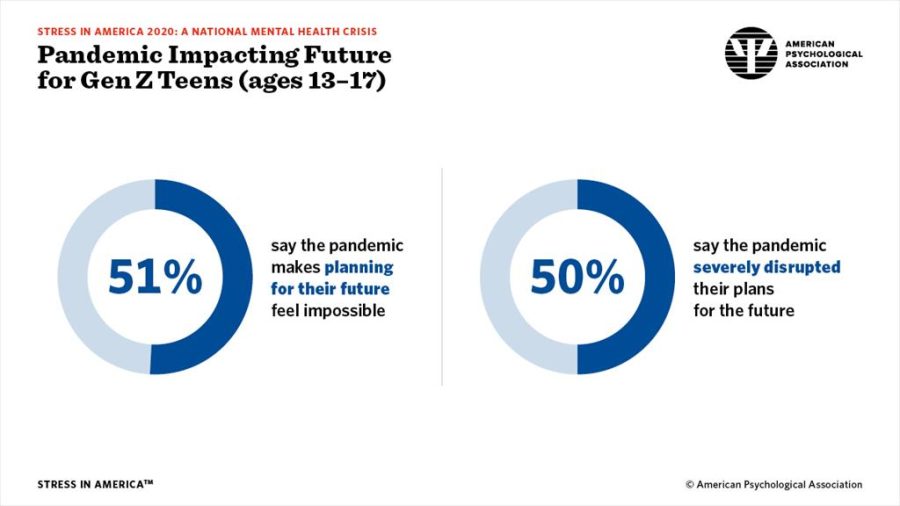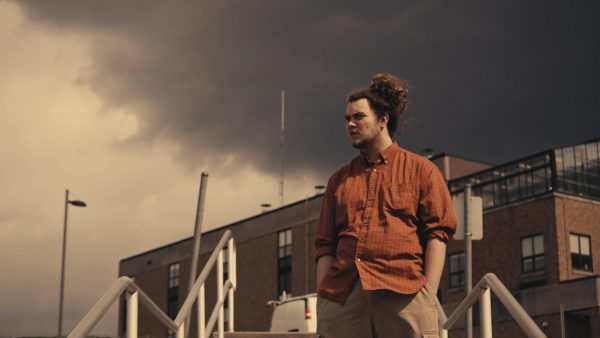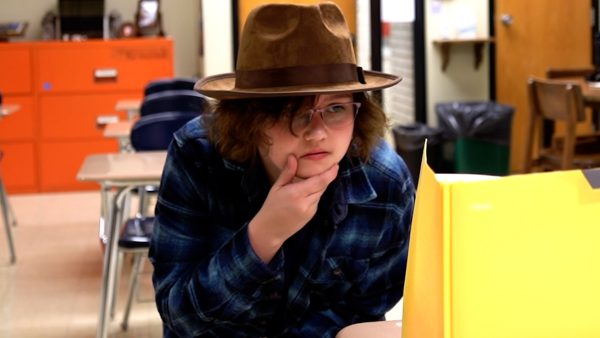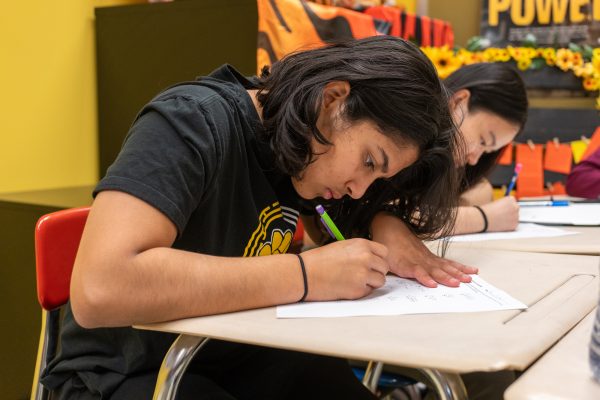With Candor and Compassion: Teens and Mental Health Therapy
Younger generations are much more comfortable with the topic of seeking professional help.
digital drawing by Morgan Nash
Young people are increasingly comfortable with the topic of therapy, which has allowed more members of later generations to seek out help.
Editor’s note: The names of some students quoted in this article have been changed at their request to protect their privacy.
Two friends meet in the middle of the FCCLA hallway. They greet each other, one drying their freshly washed hands on their pants after leaving the bathroom and the other shouldering a backpack with their coat draped over their arm.
“Where are you going?” asks friend one with a cock of the head.
“Therapy,” says friend two with a shrug. Friend one nods, and just like that they part.
Therapy: a word once filled with taboo and unhealthy stigma has increasingly become commonplace in conversations between younger generation members. According to the American Psychological Association, Generation Z-ers are the most likely of any generation to report having received treatment or therapy from a mental health professional.
The strengthening current of mental health assistance has reached North Allegheny Senior High School as well, which has not gone unnoticed by Dr. Stephanie Easley, North Allegheny’s certified school psychiatrist.
“This being my 10th year in the district, there has certainly been a gradual increase in the number of referral concerns based around mental health,” Easley said.
Easley’s job is to work with struggling students and determine what additional supports or accommodations the school can offer to improve their learning experiences. These students arrive in front of Easley either through another person’s referral, whether that be from a teacher, counselor, parent or friend, or through their own initiative.
“There has been a lot of talk locally, within our district, but even nationally about normalizing that stigma around mental health, and so I think a lot of that has kind of driven it,” Easley said.
This being my 10th year in the district, there has certainly been a gradual increase in the number of referral concerns based around mental health.
— Dr. Stephanie Easley, NA School Psychologist
Social media may also play a role in increasing Gen Z’s likelihood of receiving therapy. Although social media platforms, such as Twitter, Snapchat, and especially Instagram, are often associated with worsening teenager’s mental health, effective usage can spread information and promote mental health awareness.
This awareness manifests itself in the form of peer-to-peer mental health care and assistance.
“I hear a lot more instances of individual students coming forward to their school counselors or to a trusted teacher and saying ‘I’m really worried about so and so’” Dr. Easley reported. “Then, the adults who have to follow up are able to start conversations. [This method] has gotten a number of kids some support that we otherwise might not have been aware of.”
In the case of therapy, with breadth comes depth, as the broadening number of students receiving therapy has also increased the variability of student experiences in therapy.
The isolation and desolation brought by the COVID-19 pandemic combined with the underlying stress of high school pushed many students to seek out help in recent years.
“I have anxiety, and it got really bad earlier this [school] year,” senior Ella Baker said. “It got bad when I had to miss some days of school.”
After consulting with a doctor about her mental state, Baker and her mother decided to pursue professional help.
On the other hand, senior Rosemary Kenney is a mental health help veteran who has seen a therapist on and off since fifth grade.
“I have a lot of family issues, and I’ve experienced the passing of a few family members,” Kenney explained. “Ever since, my mom has always been partial to putting me into some type of therapy program.”
Senior Lucetta Forney also began therapy from a young age due to familial reasons.
“I first went to therapy when I was seven, and it was family therapy because someone in my immediate family was recovering from alcoholism.”
But as a mere elementary school-aged child, Forney found that the experience was unhelpful and rather unsettling.
“It was really hard to be honest at seven[-years-old] and talk to some random man. I hated it,” she said.

But as she grew older, Forney found herself seeking out therapy of her own volition.
“[In] April of my junior year, I started going consistently to a therapist… I felt really hopeless, and I didn’t feel like I mattered,” Forney remembered.
At one point, her mental health became so severe that she was receiving nine hours of therapy per a week.
For Baker, therapy did not seem like a viable or effective solution at first.
“It’s not like I’m just sad,” she said. “It doesn’t have to deal with my emotions. My body just reacts without me even thinking about it. [So] I didn’t know how it would help to just talk about things.”
But once she began receiving professional help, her improvements were obvious.
“Now, I know more about what to stay away from. [My therapist and I] are actually going to try to get to the point where I can get therapy.”
NASH junior Moira Smith also received similar benefits from receiving therapy. She started seeing a therapist one year ago because she was struggling with anxiety and depression symptoms.
“I’ve learned a lot and genuinely feel that I’ve grown as a person since I began attending therapy,” Smith said of her experience.
Forney’s reflections on personal growth align with Smith’s.
“I have far more confidence in how I feel,” she said. “Being able to identify my emotions and when certain emotions are better for certain times has been life changing,”
However, not all student experiences have been positive. Senior Jamie Raymond’s family first sent her to a therapist in fifth grade to help her deal with childhood trauma and the death of a family member. Although their client-therapist relationship started off well, Raymond eventually realized that her therapist was breaching their trust.
“I have sort of a toxic household… and my therapist would tell me she wasn’t saying anything to my parents when she was,” Raymond related.
I’ve had friends get therapy, and because people around me had had it, it didn’t feel like something I’d be alone in doing.
— Ella Baker, NASH senior
This betrayal became especially damaging during times Raymond was at her most vulnerable, further emphasizing the importance of a reliable and fitting therapist when receiving help.
“In certain situations, like Christmas, when times were hard for me and I was dealing with family troubles and grieving, my therapist would go behind my back and tell my family things,” Raymond said.
Through the varying reasons that students begin therapy and their differing experiences, it is impossible to ignore the extent to which teenagers and their loved ones are increasingly open to conversations about professional mental health help.
“Many of my friends congratulated me, a reaction that I think we need to see more of when people find it in themselves to ask for and get help,” Smith stated.
Forney added, “Usually, there’s not really a reaction to it. [If] I’m like ‘I have to go to therapy now’, they’re just like ‘Okay. See you later.’”
For Baker, the gradual normalization of therapy and the solidarity she felt with those around her made it easier to reach out for help.
“I’ve had friends get therapy, and because people around me had had it, it didn’t feel like something I’d be alone in doing. Knowing that other people are going to therapy and getting help makes it easier to think that you’re allowed to,” she said. “I feel like I’ve grown up in a time where it doesn’t feel so alien.”

Michelle Hwang is a senior at NASH and the features editor for The Uproar. She enjoys reading, so if you happen to have any book recommendations, please send them her way. And if you happen to have spare slices of pecan pie lying around, send those her way too. She really likes pecan pie. She also likes making pros and cons lists with Claire Majerac. Not about pecan pie though. There are no cons to...












